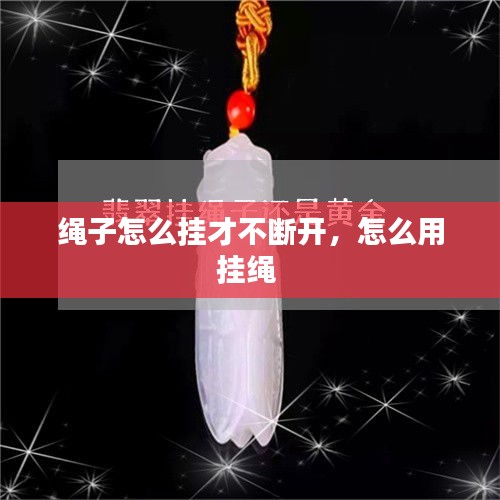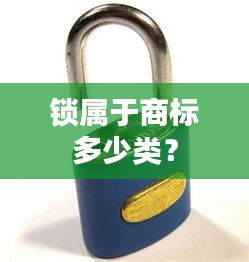<!DOCTYPE html>
<html lang="en">
<head>
<meta charset="UTF-8">
<meta name="viewport" content="width=device-width, initial-scale=1.0">
<title>How to Hang a Rope Without It Breaking</title>
</head>
<body>
<h1>How to Hang a Rope Without It Breaking</h1>
<h2>Introduction to Roping Techniques</h2>
<p>Roping is a fundamental skill in various activities such as rock climbing, camping, and outdoor exploration. Ensuring that your rope does not break is crucial for safety and efficiency. In this article, we will explore various techniques and tips to help you hang a rope securely without the risk of it breaking.</p>
<h2>Choosing the Right Ropes</h2>
<p>The first step in preventing a rope from breaking is to choose the right one for your needs. Here are some key factors to consider:</p>
<ul>
<li><p><strong>Material:</strong> Ropes are typically made from nylon, polyester, or dyneema. Each material has its own strengths and weaknesses. For example, nylon is versatile and durable, while dyneema is lightweight and highly resistant to stretching.</p></li>
<li><p><strong>Strength:</strong> Ropes come in different strength ratings, measured in pounds or kilonewtons. Choose a rope with a strength rating that exceeds your intended use, such as climbing or camping.</p></li>
<li><p><strong>Length:</strong> Ensure that the rope is long enough for your needs. A rope that is too short may not reach its intended anchor point, while a rope that is too long can be cumbersome and increase the risk of entanglement.</p></li>
</ul>
<h2>Proper Inspection and Maintenance</h2>
<p>Regular inspection and maintenance of your rope are essential to prevent breakage. Here are some steps to follow:</p>
<ol>
<li><p><strong>Visual Inspection:</strong> Check the rope for any signs of wear, damage, or fraying. Pay special attention to the ends, where the rope is most likely to fail.</p></li>
<li><p><strong>Weight Test:</strong> Perform a weight test to ensure that the rope meets its strength rating. Attach a known weight to the rope and measure the force required to break it.</p></li>
<li><p><strong>Waterproofing:</strong> If your rope is not waterproof, apply a suitable treatment to prevent moisture absorption, which can weaken the fibers.</p></li>
<li><p><strong>Storage:</strong> Store your rope in a dry, cool place away from direct sunlight and chemicals.</p></li>
</h2>
<h2>Correct Knots and Hitching Techniques</h2>
<p>The choice of knots and hitches can significantly impact the safety and longevity of your rope. Here are some key points to consider:</p>
<ul>
<li><p><strong>Practice Proper Knotting:</strong> Learn and practice the correct technique for the knots you will be using. Incorrectly tied knots can fail under load, leading to a potentially dangerous situation.</p></li>
<li><p><strong>Use Appropriate Hitches:</strong> Choose the right hitch for the task. For example, a bowline is suitable for creating loops, while a clove hitch is better for securing a rope to an object.</p></li>
<li><p><strong>Double Knots for Extra Security:</strong> In critical situations, use double knots (such as the double fisherman's knot) for added redundancy.</p></li>
</h2>
<h2>Safe Anchoring and Rigging Practices</h2>
<p>Proper anchoring and rigging are essential for preventing rope breakage:</p>
<ol>
<li><p><strong>Choose a Reliable Anchor:</strong> Use anchors that are appropriate for the terrain and load. Avoid anchors that are likely to fail under stress.</p></li>
<li><p><strong>Secure the Anchor:</strong> Ensure that the anchor is securely fastened and capable of holding the intended load.</p></li>
<li><p><strong>Check for Overloading:</strong> Do not exceed the maximum load rating of your rope or anchor system.</p></li>
<li><p><strong>Use a Bight:</strong> When possible, use a bight (a loop in the rope) instead of a knot to reduce the stress on the rope ends.</p></li>
</h2>
<h2>Training and Experience</h2>
<p>No matter how转载请注明来自无锡市先进制造产业知识产权运营服务平台,本文标题:《绳子怎么挂才不断开,怎么用挂绳 》
百度分享代码,如果开启HTTPS请参考李洋个人博客












 苏ICP备2021053023号-1
苏ICP备2021053023号-1
还没有评论,来说两句吧...